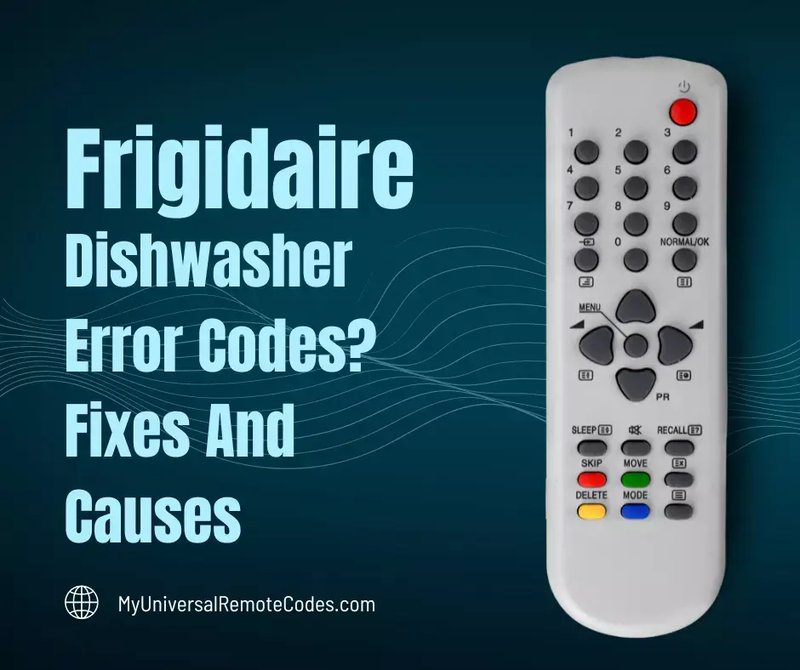
Understanding what causes this pesky error can save you both time and money. The good news is that you don’t need to be a technician to figure out why this error is appearing. Often, the issue can be resolved with a little bit of patience and some basic troubleshooting. Think of your dishwasher like a car — when the engine light comes on, you know something’s not right under the hood. Similarly, error code LE is your dishwasher’s way of letting you know it needs some attention.
Getting to Know Your Dishwasher Better
Before diving into the common causes, let’s understand what’s going on inside your dishwasher. Like most other household appliances, dishwashers have sensors. These sensors are like little detectives, constantly monitoring different parameters to ensure everything is working smoothly. When they detect something out of the ordinary, they trigger error codes as a signal for you to investigate.
Dishwashers use water to clean your dishes, and they have a sophisticated system of valves, pumps, and hoses that keep the water where it should be. If these components detect water where it shouldn’t be — or can’t move water as expected — they might trigger the LE error. Imagine a small drip under your sink; it could be annoying but harmless at first. Over time, however, it might lead to bigger issues like water damage. Your dishwasher acts preemptively to avoid such complications.
So, let’s take a closer look at what could be causing water to escape the confines of your dishwasher, leading to that dreaded error code LE.
Common Culprit: Leaking Hoses
One of the most frequent causes of the LE error code in Frigidaire dishwashers is leaking hoses. Think of hoses like the arteries of your dishwasher — they carry water to where it’s needed. Just like a small hole in an artery can cause a problem, a tiny puncture or tear in a hose might result in a leak.
Hoses are usually made of rubber or flexible plastic, which can wear out over time. They might get tiny cracks, or the connections might loosen due to constant pressure and movement. A leaking hose means water is not staying within the dishwasher confines, and the sensors pick up on this, flashing the LE error code.
What can you do? First, unplug your dishwasher and take a peek underneath or behind it. You might see damp patches or small puddles that indicate a leak. If you spot a problem, replacing the hose is the simplest solution. It’s often a task you can manage with basic tools like a screwdriver and some pliers.
Faulty Water Inlet Valve
Another common suspect when dealing with the LE error is the water inlet valve. This component is like a gatekeeper, controlling the amount of water that enters your dishwasher. If it’s not functioning properly, it might let too much water in, leading to leaks.
Over time, mineral deposits or dirt can clog the inlet valve, or it may simply wear out. Imagine trying to fill a glass of water from a faucet that won’t shut off properly — you’re going to end up with water everywhere. The same concept applies here, where an overfilling dishwasher can trip the sensors and trigger the LE error.
To tackle this, you’d want to inspect the valve. Check for any visible blockages and see if cleaning them out helps. If not, you might need to consider replacing the valve. Always ensure the dishwasher is unplugged to avoid any accidental electric shocks while working on it.
Misaligned or Damaged Door Seal
Sometimes, the simplest explanations are the correct ones. The door seal of your dishwasher is crucial in keeping the water inside during a wash cycle. If it’s damaged or not seated properly, it can cause water to leak out, resulting in the LE error code.
Consider the door seal the equivalent of a lid on a jar; if it’s not on right, things are going to spill out. Over time, the seal can wear down due to heat and moisture, or it might get misaligned after loading the dishwasher awkwardly.
Inspect the seal for any cracks or gaps. If it’s just misaligned, a gentle nudge might reseat it correctly. However, if it’s worn or damaged, replacing the door seal is a straightforward fix. You can purchase a replacement from most appliance part retailers and fit it yourself with minimal fuss.
Preventive Measures and Conclusion
To keep the LE error code at bay in the future, consider a few preventive measures. Regularly inspect hoses and seals for wear and tear, and ensure your dishwasher is sitting level to avoid any undue stress on the components. Also, using your dishwasher regularly can help prevent parts from stagnating or seizing up.
In conclusion, while the error code LE might seem daunting at first, it’s often not as serious as it appears. By understanding the potential causes — from leaking hoses to faulty valves and door seals — you can take steps to fix the issue yourself. Always remember to prioritize safety by unplugging the appliance before any inspection or repairs. With these insights, you’re well-equipped to tackle the LE error code head-on, ensuring your dishwasher runs smoothly and efficiently for years to come.